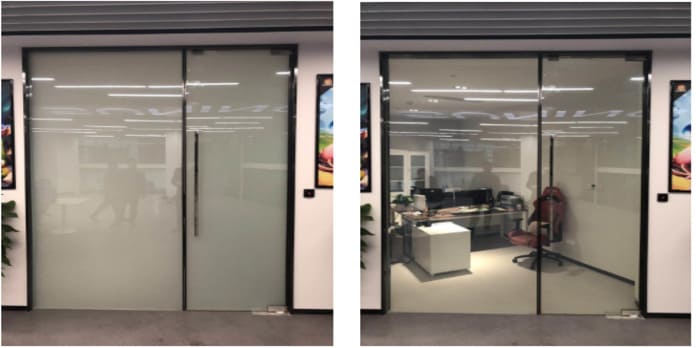Introduction
In the evolving landscape of modern architecture and interior design, smart film for glass partitions has emerged as a transformative technology that combines functionality with aesthetic appeal. Also known as switchable film or electric tint film, this innovative material allows glass surfaces to change from transparent to opaque with the simple flick of a switch or through automated controls. The image showing “POWER OFF” and “POWER ON” states perfectly illustrates this dual functionality that is revolutionizing how we think about privacy, energy efficiency, and space utilization in contemporary buildings.
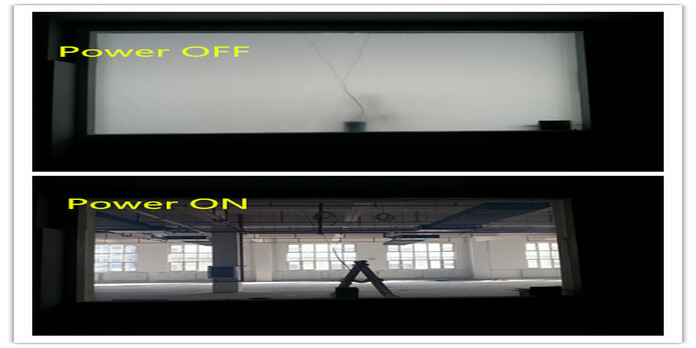
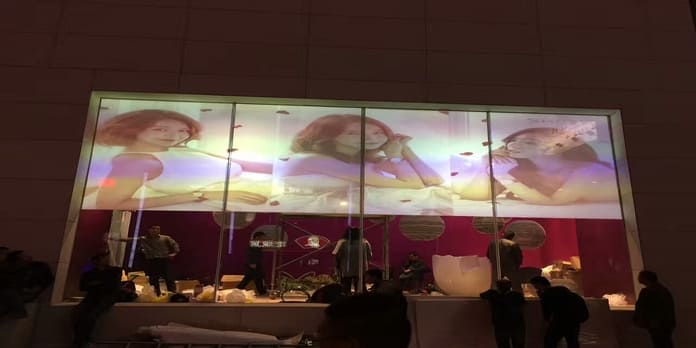
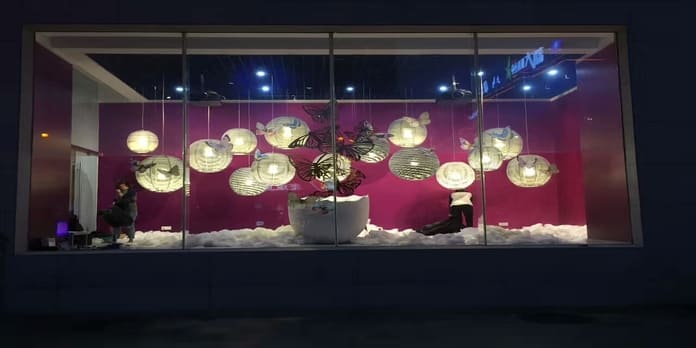
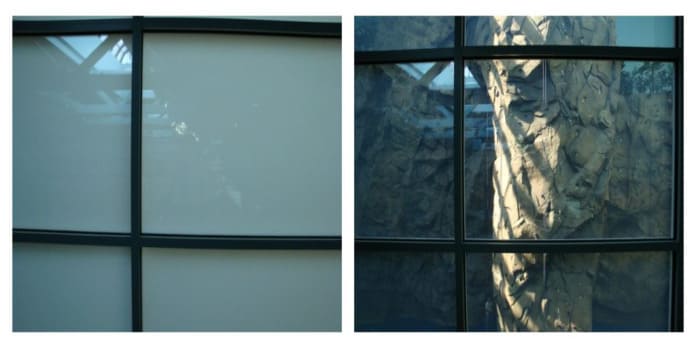
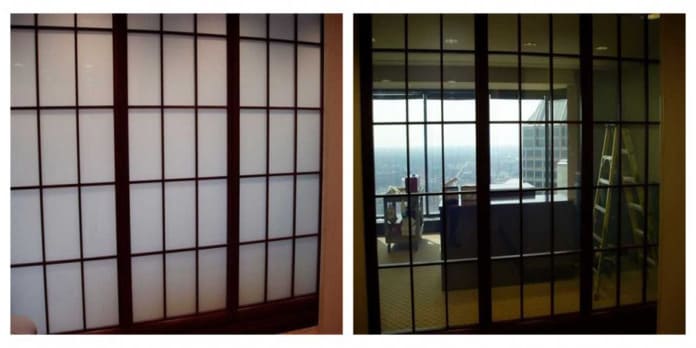
How Smart Film Works
Smart film operates using Polymer Dispersed Liquid Crystal (PDLC) technology. In its natural “POWER OFF” state, the liquid crystals are randomly scattered, creating an opaque, frosted appearance that provides privacy. When electrical current is applied (“POWER ON”), the crystals align, making the glass completely transparent. This instantaneous transformation occurs without any mechanical movement, making it a durable and low-maintenance solution.
Applications in Modern Spaces
The versatility of smart film makes it ideal for various applications:
- Office environments: Conference rooms can switch between open collaboration spaces and private meeting areas
- Healthcare facilities: Patient rooms maintain privacy while allowing visibility when needed
- Residential use: Bathrooms or bedroom partitions offer adjustable privacy
- Retail spaces: Storefronts can transform display windows as needed
Benefits Beyond Privacy
While privacy control is the most visible advantage, smart film offers additional benefits:
- Energy efficiency: The film helps regulate heat and UV radiation, reducing cooling costs
- Space optimization: Eliminates the need for physical curtains or blinds
- Aesthetic flexibility: Can be customized with patterns or company logos
- Interactive potential: Integration with smart home systems for automated control
Future Developments
As the technology advances, we can expect:
- Improved energy efficiency with solar-integrated options
- Touch-sensitive interactive surfaces
- Enhanced durability and larger format availability
- More affordable solutions for mass-market adoption
Conclusion
The smart film technology represented in the simple “POWER OFF/POWER ON” image signifies a major leap in adaptive architectural materials. By combining instant privacy control with energy-saving benefits and sleek design, smart film for glass partitions is redefining spatial boundaries in modern construction. As buildings become smarter and more responsive to human needs, this technology will undoubtedly play a central role in shaping the future of interior spaces.
